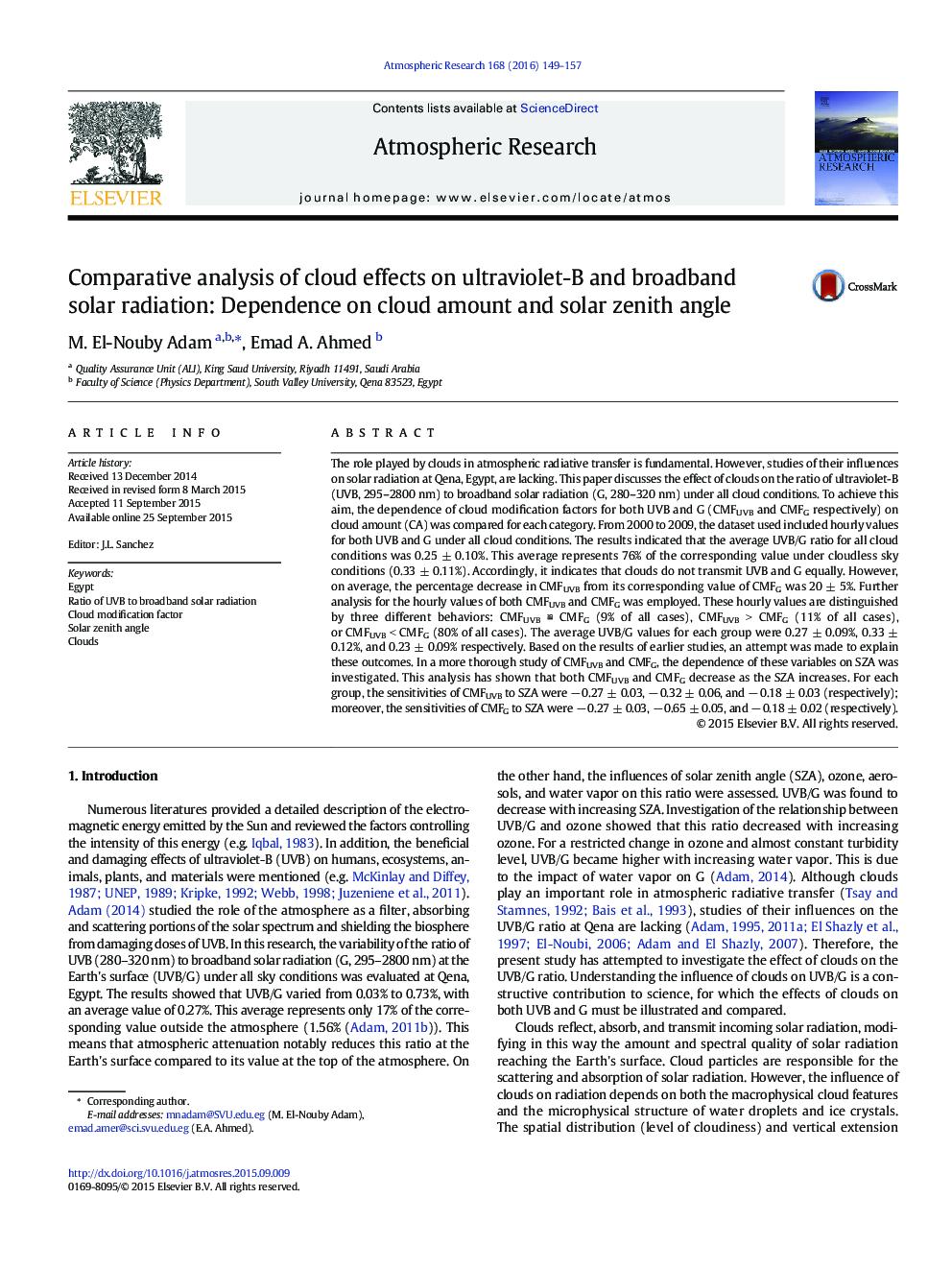| کد مقاله | کد نشریه | سال انتشار | مقاله انگلیسی | نسخه تمام متن |
|---|---|---|---|---|
| 4449646 | 1620508 | 2016 | 9 صفحه PDF | دانلود رایگان |
• Over a 10-year period, a dataset of UVB and G was separated by cloud conditions.
• Under all cloud conditions, on average, CMFG was greater than CMFUVB (20 ± 5%).
• The average UVB/G under all cloud conditions was quantified as (UVB/G)c = 0.25%.
• The average UVB/G under cloudless sky conditions was estimated as (UVB/G)0 = 0.33%.
• On average, (UVB/G)0 increased 0.08% more than (UVB/G)C.
The role played by clouds in atmospheric radiative transfer is fundamental. However, studies of their influences on solar radiation at Qena, Egypt, are lacking. This paper discusses the effect of clouds on the ratio of ultraviolet-B (UVB, 295–2800 nm) to broadband solar radiation (G, 280–320 nm) under all cloud conditions. To achieve this aim, the dependence of cloud modification factors for both UVB and G (CMFUVB and CMFG respectively) on cloud amount (CA) was compared for each category. From 2000 to 2009, the dataset used included hourly values for both UVB and G under all cloud conditions. The results indicated that the average UVB/G ratio for all cloud conditions was 0.25 ± 0.10%. This average represents 76% of the corresponding value under cloudless sky conditions (0.33 ± 0.11%). Accordingly, it indicates that clouds do not transmit UVB and G equally. However, on average, the percentage decrease in CMFUVB from its corresponding value of CMFG was 20 ± 5%. Further analysis for the hourly values of both CMFUVB and CMFG was employed. These hourly values are distinguished by three different behaviors: CMFUVB ≌ CMFG (9% of all cases), CMFUVB > CMFG (11% of all cases), or CMFUVB < CMFG (80% of all cases). The average UVB/G values for each group were 0.27 ± 0.09%, 0.33 ± 0.12%, and 0.23 ± 0.09% respectively. Based on the results of earlier studies, an attempt was made to explain these outcomes. In a more thorough study of CMFUVB and CMFG, the dependence of these variables on SZA was investigated. This analysis has shown that both CMFUVB and CMFG decrease as the SZA increases. For each group, the sensitivities of CMFUVB to SZA were − 0.27 ± 0.03, − 0.32 ± 0.06, and − 0.18 ± 0.03 (respectively); moreover, the sensitivities of CMFG to SZA were − 0.27 ± 0.03, − 0.65 ± 0.05, and − 0.18 ± 0.02 (respectively).
Journal: Atmospheric Research - Volume 168, 1 February 2016, Pages 149–157
